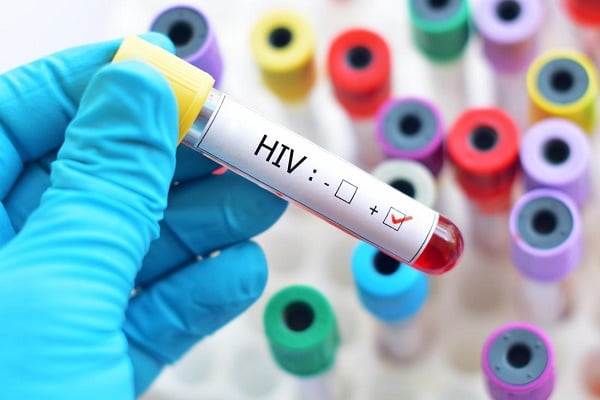Despite the fact that HIV/AIDS has been around for many years now, many people still have various misconceptions and myths about the virus and syndrome.
Unfortunately, these misconceptions are not just due to illiteracy. Even educated individuals still believe many misconceptions as facts. This has resulted in people diagnosed with HIV/AIDS receiving unwarranted discrimination.
In 1988, the World Health Organization (WHO) declared December 1 as World AIDS Day. As of 2020, about 36 million lives have been lost to HIV or AIDS-related diseases while an estimated 37.7 million people are suffering from it.
As the world marks another World AIDS Day to spread awareness, TheCable Lifestyle debunks some of these common misconceptions about HIV, the virus that causes AIDS.
HIV and AIDS are the same!
Often, the terms HIV and AIDS are used interchangeably, and this sometimes leads to confusion. Although the two are related, they are definitely not the same. HIV (Human Immunodeficiency Virus) is a virus that attacks cells that help the body fight infection, making a person more vulnerable to other infections and diseases.
If left untreated, it can then progress into AIDS (Acquired Immunodeficiency Syndrome). At this stage, the body’s immune system is badly damaged because of the virus.
Every person who has AIDS is infected with HIV, but not every person with HIV will develop AIDS.
HIV can be gotten through Kissing!
You cannot get HIV through kissing.
Although HIV can be detected in saliva, it cannot be passed to other people through kissing because saliva contains antibodies and enzymes that break down the virus before it has a chance to spread.
The only way HIV can be gotten through kissing is when a partner has an actively bleeding sore or wound in their mouth since HIV can be spread through blood.
The virus is only spread through the exchange of bodily fluids such as blood, semen, and vaginal fluids, anal fluid, and breast milk.
HIV is a death sentence!
Well, maybe it used to be. But not anymore.
Through proper treatment with antiretroviral treatment (ART), it is expected that people with HIV will live a normal life span. If ART is taken consistently, the individual’s viral load — a measure of the virus in the blood — can be greatly reduced to undetectable levels where the virus has an extremely low risk of being transmitted.
People can get HIV from sharing toilets!
HIV does not survive long outside the human body (such as on surfaces), and it cannot reproduce outside a human host, therefore, it cannot be spread by sharing toilets.
It can also not be gotten from the urine or faeces of an infected person. Sharing a toilet or bath with an HIV-positive person is safe. Also, sharing the same swimming pool or bathtub with an HIV-positive person cannot put you at risk of getting HIV.
Partners can have unprotected sex when they are both HIV positive!
There are many strains of the HIV virus. If partners both have HIV, they may each have a different strain and so would still need to protect each other from additional HIV infections.
It can lead to problems for treatment if one gets infected with two or more strains of HIV.
People living with HIV cannot marry partners who are HIV negative!
People living with HIV can fall in love, have fulfilling relationships, and get married. There are many reliable ways the HIV-negative partner can be protected from getting the virus. Taking the antiretroviral treatment to the extent the viral load becomes undetectable, using condoms, and the partner taking pre-exposure prophylaxis (PrEP) drugs to prevent infection are all ways of keeping both partners healthy.
People living with HIV cannot safely have children!
This is not true. Thanks to science, persons living with HIV can have kids who are HIV negative.
For a woman living with HIV and an HIV-negative partner, she has to take anti-retroviral drugs and have an undetectable viral load before having unprotected sex with her partner — limited to when she is ovulating. This will help reduce the risk of infecting her partner.
There will also be antiretroviral treatment during, and after the pregnancy and also treatment for the baby from birth to six weeks after delivery.
Also, women who are HIV negative and have partners living with HIV and want to get pregnant would have to take an HIV prevention drug called pre-exposure prophylaxis and the partner needs to have undetectable viral loads before attempting to have sex without a condom.
Copyright 2024 TheCable. All rights reserved. This material, and other digital content on this website, may not be reproduced, published, broadcast, rewritten or redistributed in whole or in part without prior express written permission from TheCable.
Follow us on twitter @Thecablestyle

